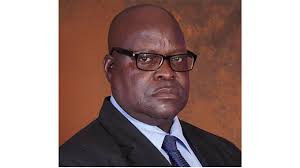
Finance minister Tendai Biti in his annual budget statement last year proposed a cut in National Social Security Authority (NSSA) contributions with effect from January 2010. But a statutory instrument to this effect came into force only in May, resulting in confusion over the administration of pension funds.“Under the current economic environment characterised by low incomes in relatively stable foreign currencies, the reviewed position on NSSA pension contributions has crowded out the voluntary Private Occupational Pension Schemes and private savings, hence threatening their long-term viability and existence. This has also constrained the capacity of employers to make contributions to both NSSA and occupational pension schemes,” Biti said. “Accordingly, contributions to NSSA by both employers and employees will be pegged at 3% each with a declared insurable earning cap of US$200. This measure is with effect from January 2010. This position will be reviewed as the performance of the economy improves and hence incomes.”
This confusion according to the Zimbabwe Association of Pension Funds resulted in some employers observing the budget statement while others applied the old threshold until a statutory instrument was put in place. The result of this anomaly means that NSSA may be caught back-footed when a pensioner claims contributions made between January and April. The effect of Statutory Instrument 83 of 2010 according to the ZAPF is to reduce the contribution rate from 4% to 3 % for both employers and employees. Previously the contributions were based on 4% of basis salary. This piece of legislation introduces a maximum amount of earnings in respect of which contributions to the National Pension Scheme shall be payable. The maximum insurable earnings limit of US$200 means that any income above this ceiling is not NSSA insurable. This means that both employers and employees will now pay less to the National Pension Scheme leaving them with more money to invest in other vehicles for retirement income provision such as Occupational Pension Funds and private savings. The new policy therefore allows for sustainable co- existence of NSSA and Occupational Pension Funds.
“We have made proposals to the ministry seeking clarity on the statutory instrument. We also understand that the Employers Confederation of Zimbabwe and the trade unions have also made theirs. We hope that the mid term policy by the minister will clarify this matter because currently we have two categories of workers with different contributions,” said ZAPF on Wednesday. When contacted for comment however, labour minister Paurina Mpariwa said: “I don’t see any confusion here because the statutory instrument becomes applicable on the date it is gazetted.”
Bernard Mpofu











